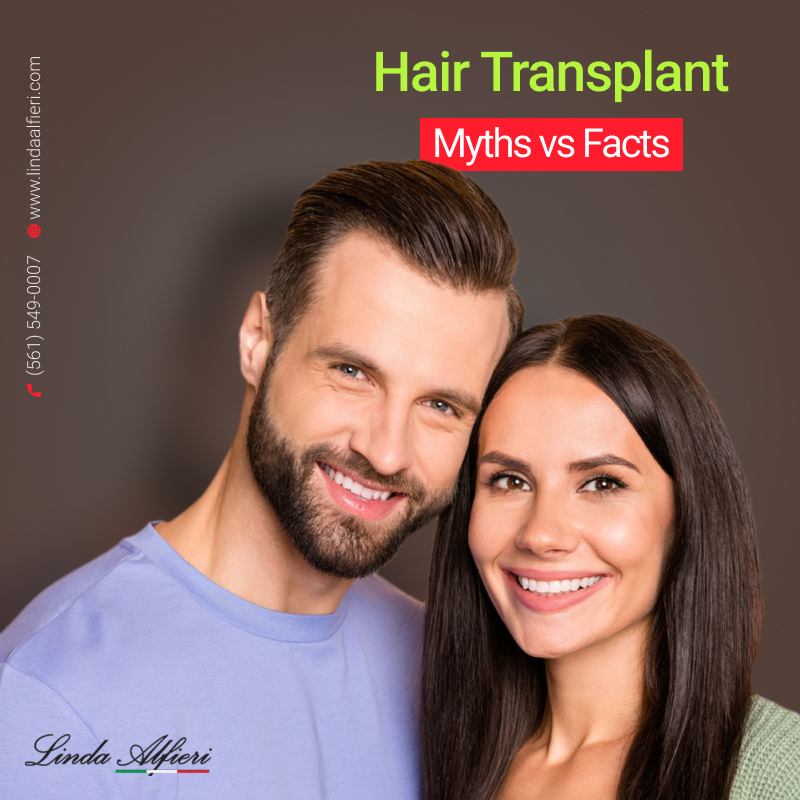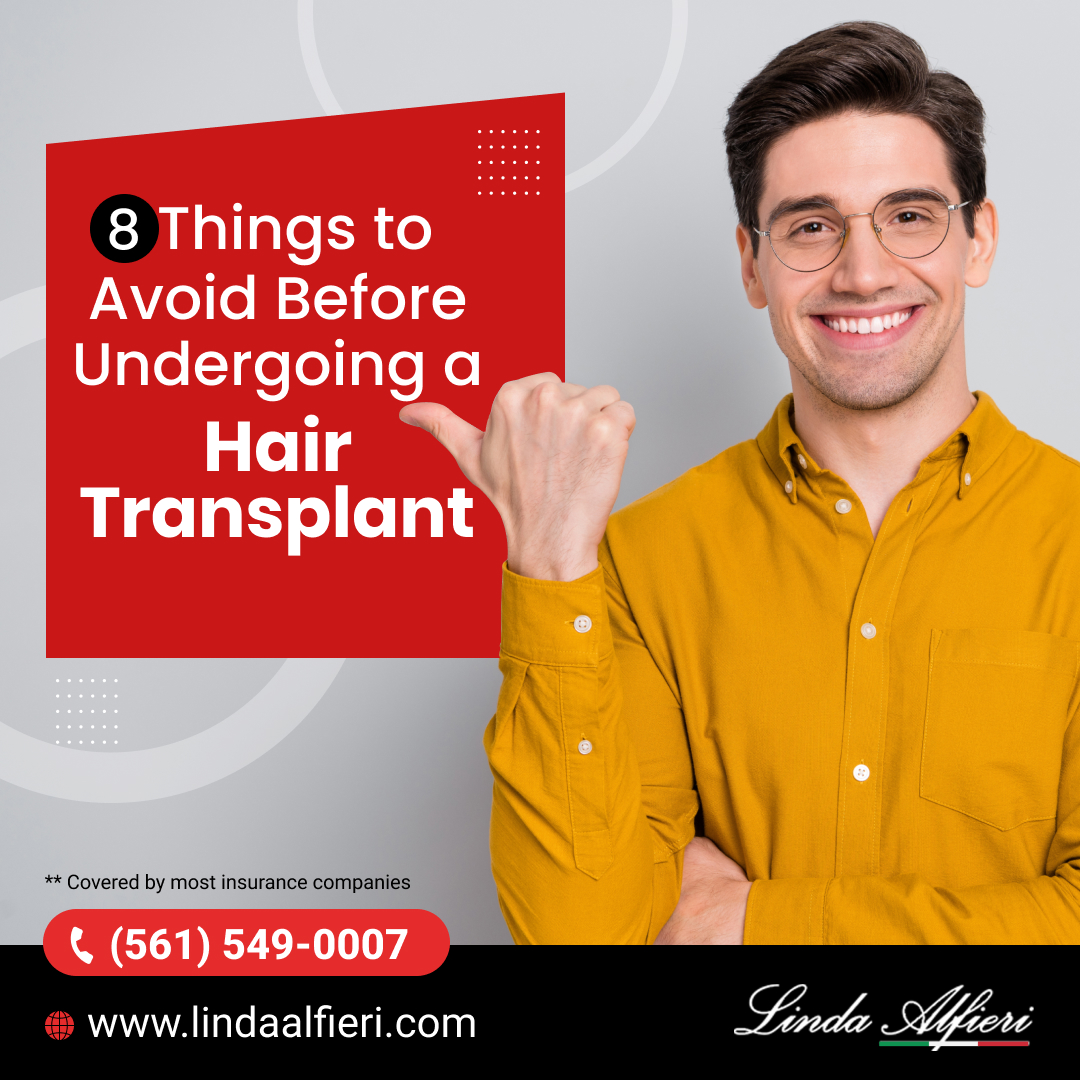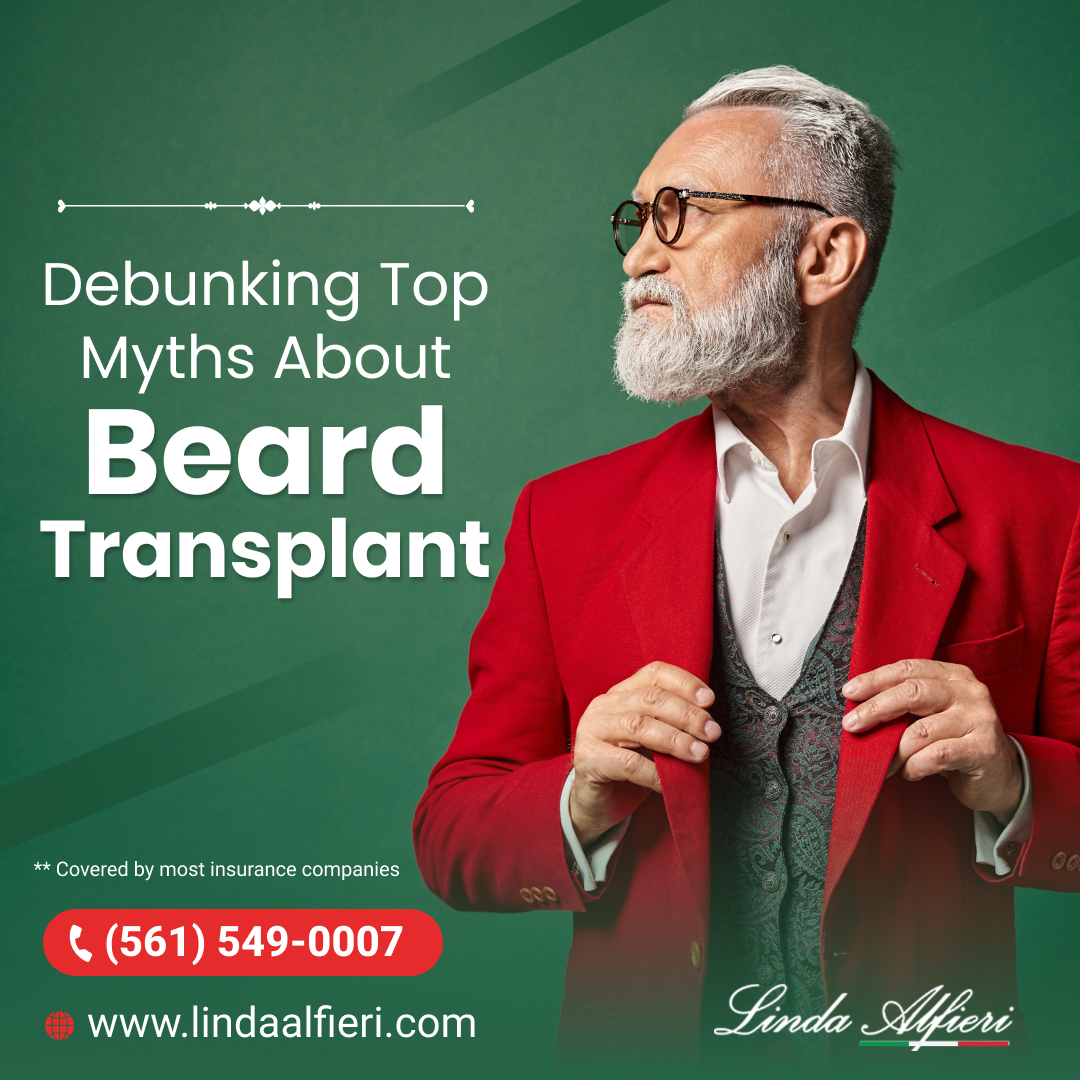192 Views Dec 09 admin
For the majority of us, hair loss is really frightening. It has more to do with how you feel than just how you appear; it undermines your self-confidence, reduces self-esteem, and more. The most common treatment for baldness, due to advances in science and technology, is hair transplantation. Despite the fact that hair transplant in Florida and everywhere else has been around for some time, there are still certain misconceptions about the procedure. These misconceptions prevent individuals from trying it out as a viable alternative to losing hair abnormally. In this blog, we dispel the most typical ones to explain why it is a worthwhile strategy to adopt in the battle against balding.
Busting the Major Myths
Know about the myths and also the facts about hair transplantations.
Myth 1: Cancer can be caused by hair transplants.
Fact:
A hair transplant has absolutely nothing to do with it. No deterioration in health with the results of sickness can be caused by this surgery. So, hair transplants do not cause cancer.
Myth 2: It is possible to see the difference between natural and transplanted hair.
Fact:
Hair transplants seem natural anytime. The hair loss remedy has proceeded beautifully, and since it is your own hair, there is no way to tell it apart from the other hair. Therefore, a spectator cannot tell that you have had a hair transplant.
Myth 3: The transplanted hair will not be thick.
Fact:
The transplanted hair will have a thicker texture and even appear to be more natural than the existing ones. Even if the hair transplant specialist is unable to equal the thickness that nature provides, it will still be acceptable and satisfying.
Myth 4: A hair transplant cannot be performed on tissue with a scar or an injury.
Fact:
As long as you have enough donor’s hair, there is no reason a scar or damaged tissue cannot be transplanted if it has fully healed and has a healthy blood supply. Thus, you must not worry about getting a hair transplant in Florida or in a nearby area.
Myth 5: Older individuals cannot have a hair transplant.
Fact:
The truth is that age is not a factor in whether or not you can have a hair transplant as long as you do not have any active medical conditions and are in good physical and mental health. Furthermore, you need to have enough donor hair for the procedure. The hair transplant specialist will be the best one to help you with this.
Myth 6: Anyone may be a donor.
Fact:
It is only your own hair that may be removed and used for transplants. The plucked hair can come from any area of your body, including your chest, arms, legs, facial hair, axilla, and pubic region.
Myth 7: The technique results in scarring.
Fact:
Earlier FUT procedures left a long and flat scar on the back of the scalp. However, modern hair transplant procedures leave no scars when performed properly and by skilled hands. Little scars may form if the patient has a tendency toward keloids, especially if the hair is removed from the chest, in such cases.
Myth 8: Can induce migraines and headaches.
Fact:
This is completely untrue and unnecessary, causing a tremendous amount of confusion. No examples of persistent headaches or cerebral pains in anyone who underwent a hair transplantation medical operation have been reported, assuming the patient was not already experiencing these.
Myth 9: Results from hair transplantation are immediate.
Fact:
The results of a hair transplant take time to manifest, just like natural hair growth does. It will take between 6 and 9 months after your hair transplant procedure for your hair to grow consistently. This waiting time may last 12 months for certain people. It is crucial to know that individuals may suffer hair loss from transplants when they are ‘shocked’ or ‘sleeping,’ and this is quite natural. Following that, strong roots will begin to sprout hair that will seem completely natural and integrate with your current hair.
Myth 10: It is an uncomfortable procedure.
Fact:
Procedures for hair transplants in Florida are carried out while the patient is under local anesthetic, so they are a pain- and discomfort-free for the duration of the treatment. Patients who have slight pain after the anesthetic wears off might be prescribed painkillers by the surgeon to lessen their suffering for two to three days. Small punches between 0.7 and 0.8 mm are utilized in the most recent Follicular Unit Extraction (FUE) treatment to remove donor hair follicles. Since these punches heal quickly, patients require little pain medication and can return to work within two to three days.
Myth 11: Only men can go for hair transplants.
Fact:
Contrary to the popular belief, male pattern baldness is not the only kind of baldness that may be treated with hair restoration techniques. The fact is that men and women have varied balding patterns, and both sexes can benefit from hair restoration procedures including follicular unit transplantation (FUT) and follicular unit extraction (FUE). Those who have common male pattern baldness or female pattern baldness are the greatest candidates for hair transplant operations. Women experience hair loss differently and tend to widespread thinning, whereas males have bald patches in the rear or front of their heads.
Myth 10: The effects are ephemeral.
Fact:
The effects of a hair transplant treatment are nearly permanent and clearly long-lasting, which is their main benefit. It is important to realize that ‘newly transplanted’ hair will begin thinning about 5-7 weeks following the procedure. It is a brief phase and a natural occurrence, though. Within the next 5 to 6 weeks, the grafts will begin to produce new hair.
Myth 11: The outcomes are not organic.
Fact:
The goal of hair restoration methods is to always seem subtle and natural. If the hair transplantation is carried out under the guidance of a qualified and reputable surgeon, you will never need to be concerned about the look of your hair. To give the transplanted hair a very realistic appearance, the surgeon will examine the angle of the hair and grafts as well as the placement of the hair follicles. After having a hair transplant, you can style, wash, and trim your hair in any way you choose.
Have reasonable expectations if you are considering having a hair transplant. Surgery for hair restoration cannot stop hair loss or prevent baldness. For both men and women who want to properly treat the symptoms of baldness or hair loss, hair transplants are fantastic options. The best part is that hair transplants are often permanent, safe, and inexpensive procedures that leave you with fuller and thicker hair.
Conclusion:
At Linda Alfieri Hair Transplant Hair Restoration Cosmetic Medical Center, we combine excellent techniques with the most recent methods and technology for hair transplant in Florida to provide each person with the finest results possible. In order to provide long-lasting and ideal results, our team of skilled and experienced hair restoration and medical specialists never rushes a patient into surgery. They always emphasize doing a thorough examination before proposing the most effective course of action.












